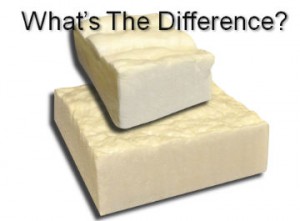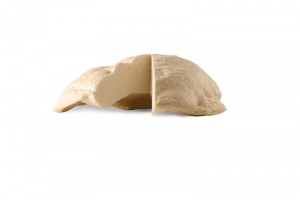Closed & Open
Open Cell or Closed Cell?….that is the question:
A quick answer to that question would be, “They’re both good!”
There are two types of Spray Foam that are typically used for insulation projects, Open Cell and Closed Cell. While it is often misconstrued that Closed Cell is the one and only spray foam insulation to use, there are actually many reasons to use both types of foam. However, determining which type of foam is best for your project can depend on a number of factors. Heartland Foam InSEALators would love the opportunity to assist you in determining the best type of Spray Foam for your project. To find out more information about spray foam in general, don’t forget to check out our InSEALation InFOAMation page too!
Common items to take into consideration:
- Is there an R-Value requirement to fulfill?
- How much space do you have?
- Is sound control important?
- Is moisture control important?
- Is there a need for added structural support?
Open Cell
 Open Cell, sometimes referred to as “half-pound”, has a density of about 0.5 lb. per cubic foot, making it a softer, thicker, lightweight foaming option that typically comes at a lower cost than that of Closed Cell spray foam. As the softer of the two foams, Open Cell can better absorb any unwanted sound waves, providing an added element of sound control. The thickness of the foam allows it to better fill the wall cavities as the foam expands during application. Due to it’s thickness and fast expansion, Open Cell is a great option for the larger and deeper wall cavities that require insulation. Open Cell provides you with a level of sound control, and cavity filling at a lower cost that cannot be reached by spraying an equal amount of Closed Cell spray foam.
Open Cell, sometimes referred to as “half-pound”, has a density of about 0.5 lb. per cubic foot, making it a softer, thicker, lightweight foaming option that typically comes at a lower cost than that of Closed Cell spray foam. As the softer of the two foams, Open Cell can better absorb any unwanted sound waves, providing an added element of sound control. The thickness of the foam allows it to better fill the wall cavities as the foam expands during application. Due to it’s thickness and fast expansion, Open Cell is a great option for the larger and deeper wall cavities that require insulation. Open Cell provides you with a level of sound control, and cavity filling at a lower cost that cannot be reached by spraying an equal amount of Closed Cell spray foam.
Open Cell provides the insulation properties homeowners have come to expect of spray foam. While it is not a moisture barrier like Closed Cell, Open Cell does provide one of the most important part of insulation, stopping the air flow. It is an air barrier and a thermal barrier that performs at an R-value of approximately 3.8 per inch. Open Cell is also a cost effective alternative to Closed Cell. While not a moisture barrier, Open Cell can be used in much of the same places Closed Cell can be used. If there is not a specific need for moisture control and structural support then Open Cell provides an alternate method of insulation at a lower cost.
Closed Cell
Cl osed Cell, sometimes referred to as “two-pound”, has a density of about 2 lbs. per cubic foot, making it a thinner, more dense and durable option that is also a moisture barrier. As the stronger of the two foams, Closed Cell can provide added structural support to the surfaces it is applied. Closed Cell does not expand as much or as fast as Open Cell, making it a good option for the more shallow cavities, limiting waste in the process. Since Closed Cell does not expand as much and provides added structural support along with moisture protection, it is a great option for the more shallow wall cavities that require insulation. Closed Cell can provide added structural strength, and moisture barrier protection not provided Open Cell spray foam, all while keeping your home insulated.
osed Cell, sometimes referred to as “two-pound”, has a density of about 2 lbs. per cubic foot, making it a thinner, more dense and durable option that is also a moisture barrier. As the stronger of the two foams, Closed Cell can provide added structural support to the surfaces it is applied. Closed Cell does not expand as much or as fast as Open Cell, making it a good option for the more shallow cavities, limiting waste in the process. Since Closed Cell does not expand as much and provides added structural support along with moisture protection, it is a great option for the more shallow wall cavities that require insulation. Closed Cell can provide added structural strength, and moisture barrier protection not provided Open Cell spray foam, all while keeping your home insulated.
Closed Cell, just like Open Cell, provides one of the most important parts of insulating, stopping the air flow, but adds the benefit of a moisture barrier. It should be noted that even thought Closed Cell does perform as a moisture barrier, it is important to remember that Spray Foam is an insulation product, the water proofing is just an added bonus to it’s already great performance. While not an ideal sound barrier like Open Cell, Closed Cell is an air barrier, thermal barrier, and moisture barrier that performs at an R-value of approximately 7 per inch.
Search:
Categories
- No categories
